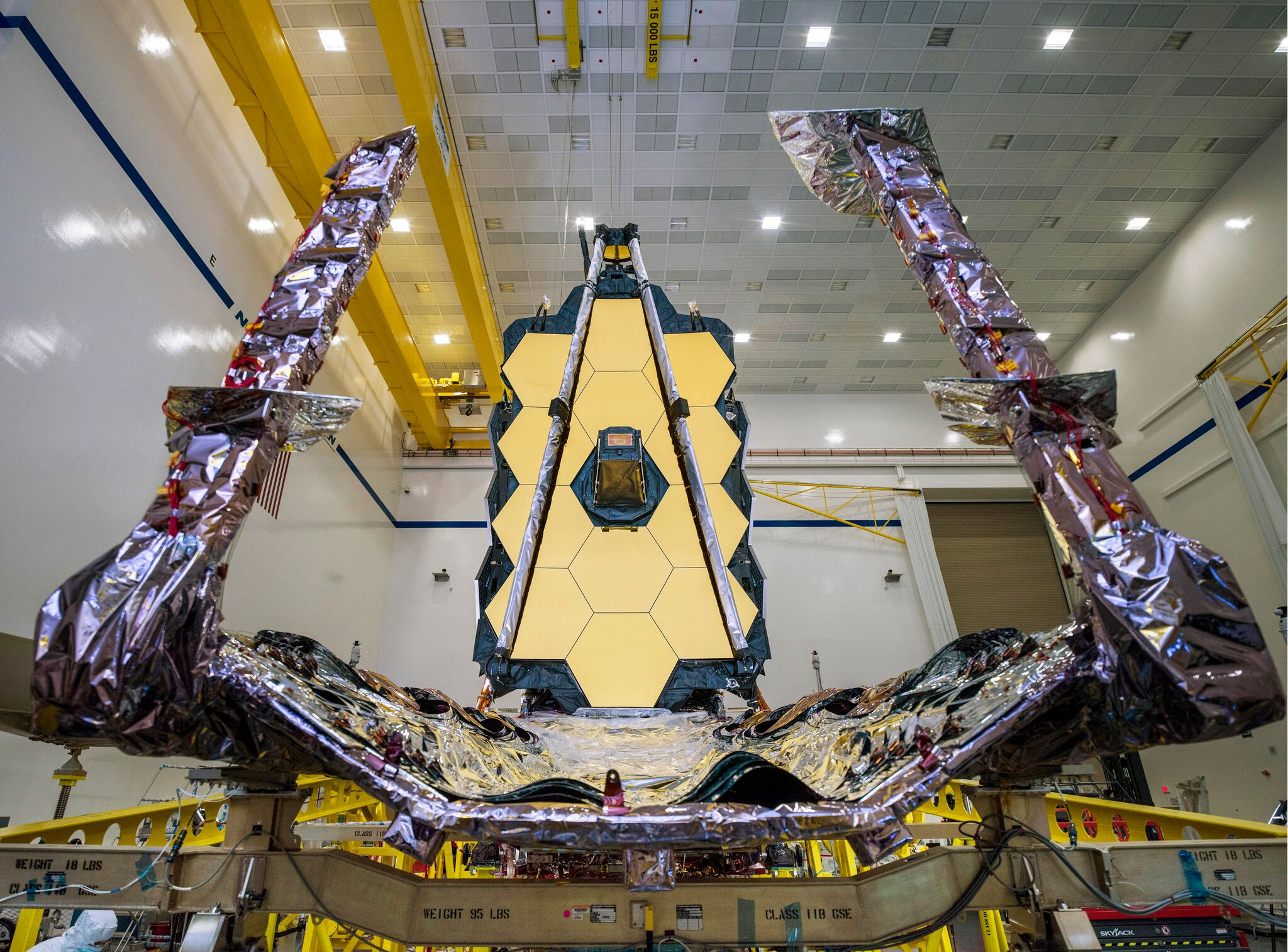NASA's James Webb Space Telescope launch delayed to December
The Dec. 18 launch slip is yet another delay for the long-awaited observatory.

NASA's long-awaited and high-powered James Webb Space Telescope won't begin observations this year after NASA and its counterpart the European Space Agency (ESA) announced another launch delay.
In coordinated statements, the two agencies announced that the observatory is now targeting a launch on Dec. 18, more than six weeks after its previously set liftoff date. The highly-anticipated project has racked up consistently escalating budget and schedule overruns since development began in the 1990s.
"We now know the day that thousands of people have been working towards for many years, and that millions around the world are looking forward to," Günther Hasinger, ESA's director of science, said in an agency statement. "Webb and its Ariane 5 launch vehicle are ready, thanks to the excellent work across all mission partners. We are looking forward to seeing the final preparations for launch at Europe's Spaceport."
Related: NASA's James Webb Space Telescope unfolds its giant mirror for last time ahead of launch
The observatory's most recent target launch date was Oct. 31, but it had long been suggested that the telescope, also known as JWST, would miss that schedule. In June, Thomas Zurbuchen, who serves as NASA's associate administrator for science, admitted that the timeline for the launch was looking tricky.
The observatory has not yet shipped from its current location in California to ESA's launch site at Kourou in French Guiana, and estimates suggest that the observatory needs about 10 weeks turnaround time from shipping out until launch. Additionally, the Ariane 5 rocket that will launch the observatory only began its journey from Europe to South America for the flight in mid-August, according to an ESA statement.
Ariane 5 made its first flight in nearly a year on July 30; Arianespace, which builds the rocket, had benched the launcher after two 2020 flights were successful but experienced nose cone anomalies. The rocket has another preparatory flight to make later this month before it will be clear to launch the new observatory.
Get the Space.com Newsletter
Breaking space news, the latest updates on rocket launches, skywatching events and more!
"Webb is an exemplary mission that signifies the epitome of perseverance," Gregory L. Robinson, Webb's program director at NASA, said in an agency statement.
"Together, we've overcome technical obstacles along the way as well as challenges during the coronavirus pandemic," he added. "Now that we have an observatory and a rocket ready for launch, I am looking forward to the big day and the amazing science to come."
Once the James Webb Space Telescope launches, the spacecraft will spend about a month traveling the 930,000 miles (1.5 million kilometers) out to its destination, the second Lagrange point (L2). Here, the observatory can enjoy a relatively stable "parking spot" orbit on the opposite side of Earth from the sun. The location is crucial for the telescope, which must remain well shielded from the heat that would interfere with the infrared capabilities on the observatory.
The telescope's instruments won't turn on until two or three months after launch, and typical science won't begin until about six months after launch, according to ESA.
Email Meghan Bartels at mbartels@space.com or follow her on Twitter @meghanbartels. Follow us on Twitter @Spacedotcom and on Facebook.
Join our Space Forums to keep talking space on the latest missions, night sky and more! And if you have a news tip, correction or comment, let us know at: community@space.com.

Meghan is a senior writer at Space.com and has more than five years' experience as a science journalist based in New York City. She joined Space.com in July 2018, with previous writing published in outlets including Newsweek and Audubon. Meghan earned an MA in science journalism from New York University and a BA in classics from Georgetown University, and in her free time she enjoys reading and visiting museums. Follow her on Twitter at @meghanbartels.









